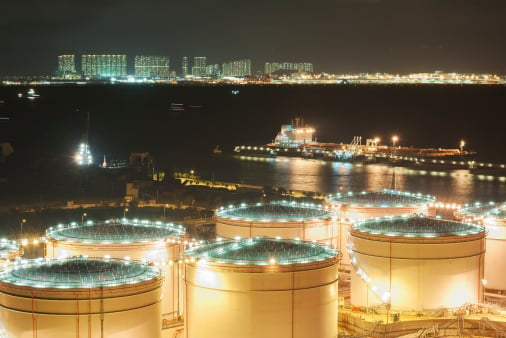
Source: Thinkstock
July is a big month for oil refiners, or at least it was. In 1998, U.S. refiners ran at 100% of capacity during the week of July 10 and at more than 100% of capacity in the week before Labor Day. Following that week in 2005, it took six years for refiners to reach even 90% of capacity again.
There could be a few reasons for the boost in refining. First, U.S. drivers posted in May a new all-time high for miles driven. (May is the most recent month for which data is available.) Miles driven had reached a peak in November 2007 and then stagnated for nearly eight years.
The increase in miles driven is likely due mainly to lower gasoline costs, which typically encourage Americans to hit the road. As unemployment rates decline, more people are back in the cars driving to work as well.
Another primary reason for the increase in refinery usage is product exports. Since late August of 2013, U.S. refiners have been exporting more than 3 million barrels a week of gasoline, diesel and other refined products. The current total is 3.74 million barrels a day of exports, based on a four-week average.
ALSO READ: 4 Oil Services Stocks With Potential Upside of 75% or More
Some of the export increase is due to production of lightly refined crude oil that is the nearest thing U.S. producers and refiners can send out of the country, except to locations in Canada and Mexico. Kinder Morgan operates a so-called splitter plant that separates the condensates that are produced along with crude oil into components such as naphtha, kerosene and gasoil. The components are then exported and fully refined into usable fuels once they reach their destinations. The refinery expansion that Exxon Mobil announced earlier this week is also targeted at these light condensates.
Because refined products command a higher price than crude oil, producers can take advantage of the refining spreads to boost profits for a reasonable cost. Where a new refinery to produce gasoline might cost $3 billion to $4 billion to construct from the ground up, a condensate splitter plant may cost as little as a tenth of that. Besides, as automobile mileage improves, growth in demand has slowed and that trend will continue, even if more slowly because pump prices are so low.
A final reason for the boom in refining last week may be that California’s refineries are coming back online after some unscheduled repairs. California drivers have been paying nearly $3.50 a gallon recently for gas when the national average is around $2.55. One consumer advocacy group has accused California refiners of exporting gasoline in order to reduce inventories in the state and keep prices high.
ALSO READ: With Oil and Gas Down Huge This Year, 4 Quality Stocks to Buy Now
It is also worth noting that U.S. refiners are not the only ones who have either been taking advantage of or positioning themselves to take advantage of the higher prices paid for refined products. Saudi Arabia has a third 400,000 barrel-per-day refinery on the drawing board (it already has two that size), the United Arab Emirates is doubling the capacity of its 415,000 barrel-per-day refinery at Ruwais. Both are looking at additional exports to help boost profits while crude prices remain low.
Take This Retirement Quiz To Get Matched With A Financial Advisor (Sponsored)
Take the quiz below to get matched with a financial advisor today.
Each advisor has been vetted by SmartAsset and is held to a fiduciary standard to act in your best interests.
Here’s how it works:
1. Answer SmartAsset advisor match quiz
2. Review your pre-screened matches at your leisure. Check out the advisors’ profiles.
3. Speak with advisors at no cost to you. Have an introductory call on the phone or introduction in person and choose whom to work with in the future
Take the retirement quiz right here.
Thank you for reading! Have some feedback for us?
Contact the 24/7 Wall St. editorial team.


